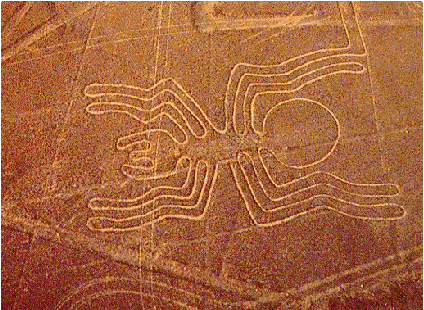Things like why a myth is a myth, or why Archaeologists except certain views over others. If you’re not well versed in these reasons, it can seem a little biased and possibly lead to confusion, like in what the term “quantum” means. So, when I saw Von Daniken and his ilk using the term “Cargo Cult” to describe the Nazca lines, I realized many people may not understand what he’s saying.
In order to give the fullest amount of information possible, I need to back up a little. I want to start with a new set of nearly basic terms. This time I want to introduce to you what Cargo Cults are.
So briefly, what is a cargo cult?
It is a phenomenon of when less advanced cultures encounter more advanced cultures and 1) regard the advanced peoples as supernatural beings whose purpose is to deliver goods (cargo) and 2) use mimicry or pantomime to create ritual in hopes of resumed delivery of such goods.
Probably the most famous Cargo Cult is the Cult of John Frum, worshiped in the South Pacific by the Vanuatu tribe. As many origin stories do this one has many versions, but the jest of it goes; John Frum was a U.S. Sailor that come to the islands during WWII. He brought with him cargo ships and gave freely to the people there. When it was time for him to leave, he told the people he would return and bring with him more cargo, and so the people wait for him to do so.
Unsurprisingly, the John Frum myth has evolved to fit into to it the problems of the modern Vanuatu. In an article by the BBC News,
“Villagers believe the spirit of John Frum sent the US military to their South Pacific home to help them.With the invasion of Christian missionaries and the loss of the WWII cargo the Vanuatu have turned John Frum into a strange hybrid of a rebellion leader with a love of tradition. So what started as a desire to have their golden age back has turned to a rallying cry to return to traditional ways, with a twist. Probably the best quote for this cult is given by Chief Isaac one of the top leaders in the cult. In a Smithsonian article by Paul Raffaele, Raffaele asks Chief Isaac why they still wait for John Furm’s return,
Devotees say that an apparition of John Frum first appeared before tribal elders in the 1930s.
He urged them to rebel against the aggressive teachings of Christian missionaries and instead said they should put their faith in their own customs.” [1]
“Chief Isaac shoots me an amused look. “You Christians have been waiting 2,000 years for Jesus to return to earth,” he says, “and you haven’t given up hope.”[2]Brian Dunning does an excellent job of delving deeper into the causes of the John Furm cult, and the complicated circumstances that led to the formation of the cult. I highly recommend reading his article. [3]
So the argument that is being made by Ancient Astronauts is that primitive peoples after encountering the Aliens in some way, became so enamored by their cosmic cargo that when the Aliens left, the peoples started cargo cuts in the hopes that the Aliens would return. Citing the return of Jesus and other similar deities as evidence. For something a little more physical as proof, they point to the Nazca lines saying that these are certainly primitive attempts at landing strips.

At first blush this might seem logical. If you knew nothing more about the lines then that they are carved out of the red rock in Nazca in long lines, then it might seem reasonable. When you began to look at the curves and pictures the lines take on then you hopefully began to doubt this.
There have been many, many suggestions as to what the lines really are, from giant astrological maps to markers of underground waterways. [4]
All of these have more evidence supporting them than the idea of Aliens ever will. In the next part of this we’ll go over the past research on the lines and new accepted purpose of the lines.
Bibliography
Brian Dunning 2010 Skeptoid #199 March 30, 2010 http://skeptoid.com/episodes/4199
Carr, Tarini The Nazca Lines: A Mystery on the Plains Archaeology Online http://www.archaeologyonline.net/artifacts/nazca-lines.html
Mercer, Phil. 2007 Vanuatu cargo cult marks 50 years. BBC News, Tanna, Thursday, 15 February 2007 http://news.bbc.co.uk/2/hi/asia-pacific/6363843.stm
Raffaele, Paul 2006 In John They Trust Smithsonian magazine, February 2006 http://www.smithsonianmag.com/people-places/john.html





Comments